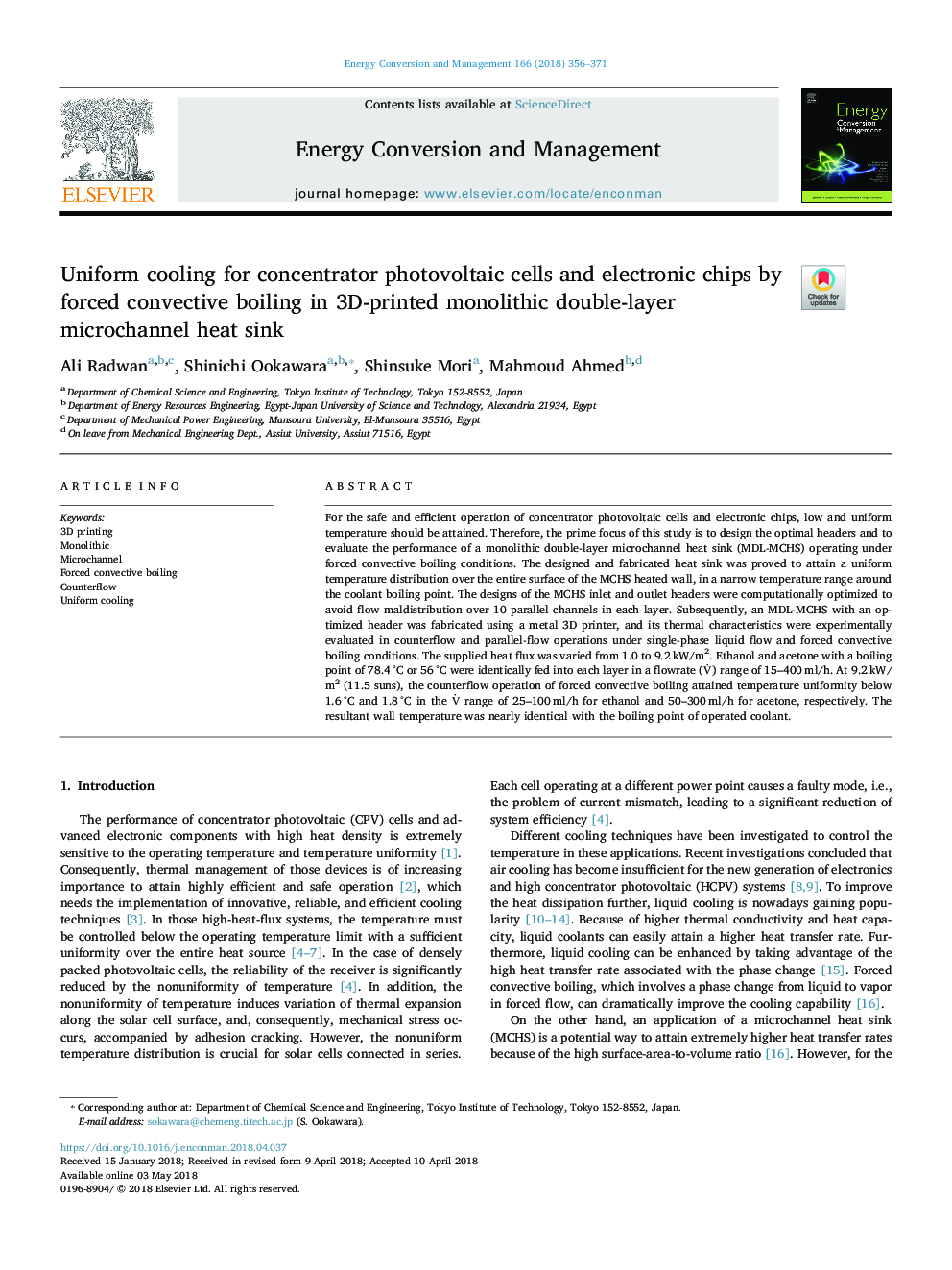| Article ID | Journal | Published Year | Pages | File Type |
|---|---|---|---|---|
| 7158385 | Energy Conversion and Management | 2018 | 16 Pages |
Abstract
For the safe and efficient operation of concentrator photovoltaic cells and electronic chips, low and uniform temperature should be attained. Therefore, the prime focus of this study is to design the optimal headers and to evaluate the performance of a monolithic double-layer microchannel heat sink (MDL-MCHS) operating under forced convective boiling conditions. The designed and fabricated heat sink was proved to attain a uniform temperature distribution over the entire surface of the MCHS heated wall, in a narrow temperature range around the coolant boiling point. The designs of the MCHS inlet and outlet headers were computationally optimized to avoid flow maldistribution over 10 parallel channels in each layer. Subsequently, an MDL-MCHS with an optimized header was fabricated using a metal 3D printer, and its thermal characteristics were experimentally evaluated in counterflow and parallel-flow operations under single-phase liquid flow and forced convective boiling conditions. The supplied heat flux was varied from 1.0 to 9.2â¯kW/m2. Ethanol and acetone with a boiling point of 78.4â¯Â°C or 56â¯Â°C were identically fed into each layer in a flowrate (VÌ) range of 15-400â¯ml/h. At 9.2â¯kW/m2 (11.5 suns), the counterflow operation of forced convective boiling attained temperature uniformity below 1.6â¯Â°C and 1.8â¯Â°C in the VÌ range of 25-100â¯ml/h for ethanol and 50-300â¯ml/h for acetone, respectively. The resultant wall temperature was nearly identical with the boiling point of operated coolant.
Related Topics
Physical Sciences and Engineering
Energy
Energy (General)
Authors
Ali Radwan, Shinichi Ookawara, Shinsuke Mori, Mahmoud Ahmed,
